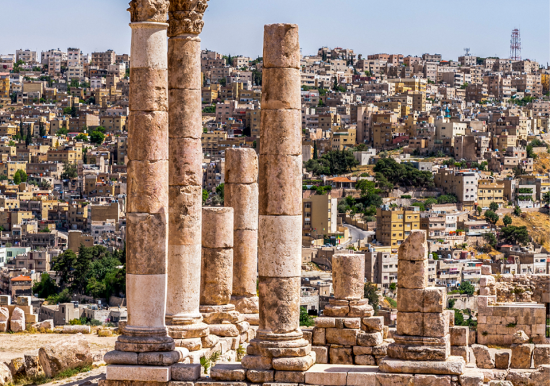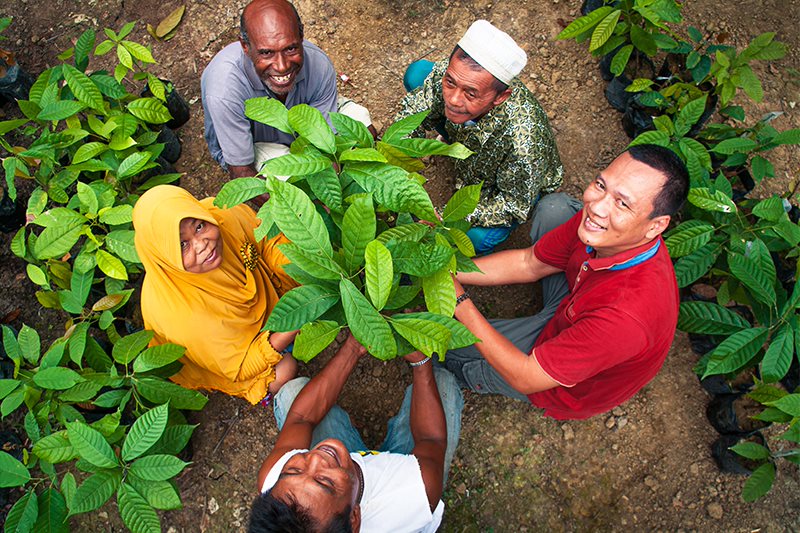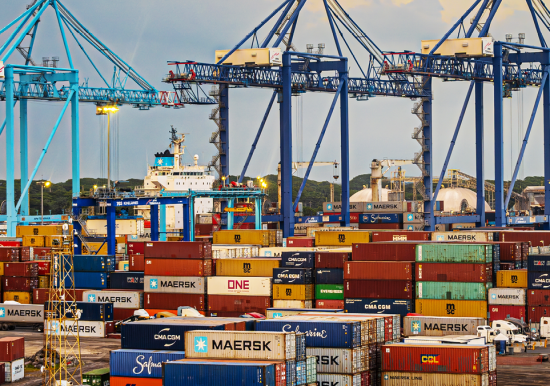
Cultivating Natural Capital: Working Together to Make a Decisive Difference
Ann Jeanette Glauber, Practice Manager, Environment, Natural Resources and the Blue Economy, World Bank
Ann Jeannette Glauber is the World Bank’s Singapore-based Practice Manager for Environment, Natural Resources and the Blue Economy in East Asia and the Pacific Region. Her team helps countries in Asia and the Pacific develop in ways that are greener, more inclusive, and more climate resilient by providing expertise, technical assistance, and financing to help countries manage their lands, oceans, and renewable natural resources in a sustainable way.
Striking a Balance between National Development and Addressing Climate and Sustainability Needs
Economies and communities thrive only in the presence of a healthy environment. Yet many measures of economic progress do not accurately capture the state of “natural capital”: the natural assets that are the basis for economies and livelihoods. This is why the World Bank supports countries to develop natural capital accounts to track performance and inform policy decisions. Countries should move beyond GDP to consider natural capital as they do “built” assets such as manufactured and financial capital, or social and human capital.
In recent years, countries have started acting on this perspective as they experience the direct costs of climate change stemming from natural resources’ degradation. What’s significant about this change is that national choices are being driven by a combination of domestic self-interest—avoiding the severe costs of climate change—and international market and financial incentives. Vietnam, Indonesia, Lao PDR and Fiji, for instance, being home to globally significant natural resources, have signed Emission Reductions Payment Agreements (ERPAs) with the Forest Carbon Partnership Facility (FCPF) administered by the World Bank, unlocking payments of up to USD 216 million for 43.2 million tons of verified emission reductions by 2025—equivalent to the annual emissions of 11 coal-fired power plants.
These agreements have the potential to bring in finances to make a significant contribution towards national climate mitigation targets. But beyond being underpinned by ambitious emission reductions programs led by local jurisdictions (provinces or states), the agreements also hold potential to improve communities’ livelihoods and reduce poverty, with inclusive benefit sharing plans developed through extensive consultation processes to ensure that participating stakeholders are recognised and fairly rewarded for their role in reducing emissions.
What we can learn from these countries is that they leverage their unique assets – in the cases above, it is their rich natural resources – to be managed sustainably not only for climate change mitigation purposes but also communities’ livelihoods and economic growth.
Ann Jeanette Glauber, Practice Manager of Environment, Natural Resources and the Blue Economy, World Bank
Another example comes from Indonesia, home to the third largest tropical forests and the largest mangroves area. Last year, Indonesia announced an ambitious goal to turn its Forests and Land Use (FOLU) sector into a carbon net sink by 2030. In achieving this target, Indonesia is thinking about not just reducing emissions, but also the affected communities’ livelihoods and economic growth. The National Mangrove Rehabilitation Program, aimed at rehabilitating 600,000 hectares of mangroves by 2024, will not only contribute to Indonesia’s carbon net sink target, but also will work closely with local communities, providing short-term incentives for participation through cash-for-work approaches and long-term opportunities by training local communities and facilitating access to markets and starting and expanding businesses. The country will also develop mechanisms to leverage blue finance from the carbon stored through mangrove rehabilitation.
What we can learn from these countries is that they leverage their unique assets—in the cases above, it is their rich natural resources—to be managed sustainably not only for climate change mitigation purposes but also for communities’ livelihoods and economic growth.
Effective Government Coordination is Key in Meeting Climate and Environmental Challenges
Complex environmental challenges often require a whole-of-society approach. The latest IPCC 2022 Report on Climate Impacts, Adaptation and Vulnerability has again underscored that climate change already threaten many sectors: food security, livelihoods for millions of people, water insecurity and even public health, given that higher temperatures increase the spread of vector-borne diseases. In fact, most environmental issues come from “other” sectors, such as urbanisation, transportation development, agriculture or industrialisation. Therefore cross-sectoral coordination—between ministries and agencies, with private sectors, CSOs and other actors—is critical.
While it isn’t sexy, good coordination is critical to address many of the most pressing environmental challenges. In Indonesia, for instance, addressing the causes of unsustainable natural resource management and meeting multiple land-related goals has called for an integrated and cross-sectoral approach. With an integrated approach to landscape management, stakeholders from multiple sectors can come together to balance competing land use demands in a way that is best for human wellbeing and the environment.
This means creating solutions that consider food and livelihoods, finance, land rights, restoration and progress towards climate and development goals.
The Sustainable Landscape Management Program (SLMP) in Indonesia aims to do just that: promoting activities across multiple sectors and collaborates with stakeholders from the national and provincial government, private sector, civil society, and communities through three main components: improving land administration and governance, managing forests resources sustainably, and mobilising financing for landscape management. In the Strengthening Rights and Economies of Adat and Local Communities Project, for instance, Indigenous Peoples and Local Communities (IPLCs) collaborate closely with governments, civil society organisations and researchers to advocate for the official recognition of their status as a customary law community (an Indonesian legal term for indigenous peoples) as well as their rights over customary areas and forests. Such recognition helps IPLCs to protect their livelihoods, conserve their forests, and provide them with incentives to invest in sustainable, long-term management of their land and forests.

Good Governance Makes a Difference in Addressing Climate Change
There is no silver bullet to addressing climate change: it requires a whole-of-government and whole-ofsociety approach, as earlier mentioned. But if I were to pick three key capabilities that governments should cultivate to be ready for the challenge, I would choose:
- Long-Term Vision: Given that climate change requires addressing many of the fundamental elements of how our society and economy operates, it will require a long-term commitment to meaningfully respond. Thus, leadership will have to focus on setting a vision, and outlining the targets and steps for the country to get there over an extended period.
- Coordination: To meaningfully reduce emissions requires actions by various parts of government— those working with energy, agriculture, land use and forestry, transport, industry, planning, and finance, just to name a few!—takes effective coordination among various agencies to balance the various interests and objectives of the different sector actors, and to ensure that multiple government parties agencies act coherently and in a collaborative manner to achieve the desired outcomes.
- Effective Implementation: Good plans without implementation are just words. If we are going to have meaningful shifts in behaviours and outcomes, governments must have the ability to execute its stated policies and meet those policy objectives.
What the World Bank is Doing to Help Countries be More Sustainable and Climate Resilient
The World Bank Group is one of the world’s largest sources of funding and knowledge for developing countries with a commitment to reduce poverty, increase shared prosperity, and promote sustainable development. We provide financial products and technical assistance, and we support countries in sharing and applying innovative knowledge and solutions to the challenges they face. In doing so, we place emphasis on multi-stakeholder partnerships as an increasingly important aspect of World Bank engagement. The World Bank’s Country Partnership Framework, for instance, identify the most important challenges and opportunities a country faces in advancing towards the Bank’s twin goals through consultations with a range of stakeholders.

Over the years, the World Bank partnerships have taken the form of information sharing, policy dialogue, strategy consultation, as well as more importantly, operational collaboration and institutional partnerships. In addition to administering the Forest Carbon Partnership Facility (FCPF)—a global partnership of governments, businesses, civil society, and Indigenous Peoples focused on REDD+, the Bank also houses major trust funds and global partnerships, such as PROBLUE and PROGREEN that support the integrated and sustainable development of marine, coastal and forests resources. As an example, the Forest Investment Program (FIP) under PROGREEN provides grants and low-interest loans to help governments, communities, and business stakeholders work together to address the drivers of deforestation and forest degradation. We have seen this in action in countries like Indonesia, Lao PDR, Thailand and more.
Hope for the Future in the Face of Environmental and Climate Challenge
As a global community, the environmental issues we are facing are tremendous. Issues like largescale loss of nature and biodiversity, pollution of air, water and soil, climate change and its wide-ranging impacts on the natural systems we depend on for life on this planet—these are extremely complex; for many, even overwhelming.
Aside from my family, I cannot think of anything more important than nature. Sitting on a mountaintop looking at the forest expanse at my feet. Listening to the wind in the trees, the birds, and the insects. Staring into a crystal-clear lake and watching the fish, the water bugs, and the ducks do their thing. Diving along a coral reef, watching giant turtles, manta rays, and schools of fish swim slowly by, the light shining through the water.
The idea that without major shifts in the way we live that by 2050—less than 30 years from now—many of these systems will be in dire shape. Living coral reef systems are expected to be largely gone with 1.5 degrees of warming—a future that is now almost certain. We are witnessing collapsing sea ice which models show to be a tipping point for sea level rise. Can we just sit by and let it happen?
Fighting to give my kids opportunities to live on such a vibrant planet is for me deeply motivating. We truly must rise and act now to protect the amazing world in which we live.
More Stories


Global Influence & Reputation Country Snapshot: Türkiye

